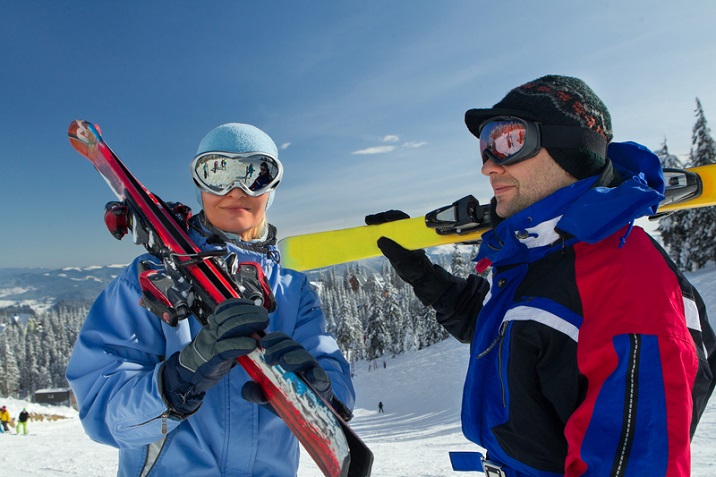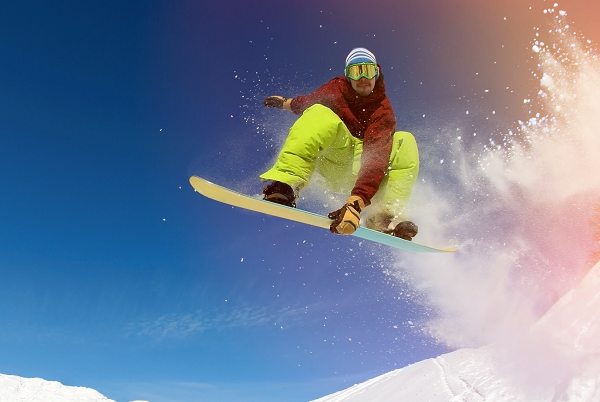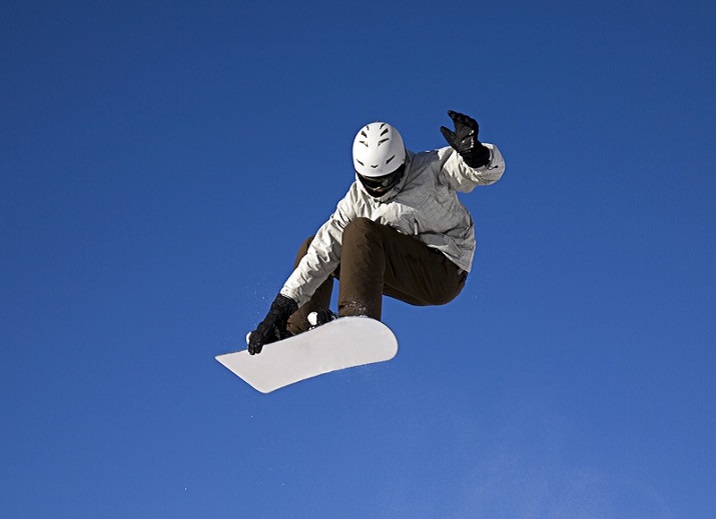Ski Jumping – How to Play?
Ski Jumping − Basics
To perform ski jumping, you will have to ski off a lip or make a jump fast enough for a take-off. There are various techniques to make a jump higher enough to be in the air for more time.

Jumping on skis is quite different to jumping normally as with ski boots and skis, you are unable to move your ankles or your lower legs. Most of this jumping has to come from the upper legs and body. To generate power, put your knees and hips into use. There are two different techniques that can be used to get more air when jumping.
-
Springing − Springing is like usual jumping but mostly using the upper legs and body to spring.
-
Ollie − In this technique, an athlete tries to spread the skis to jump even higher.
Both techniques are very effective and will help you give a great flight but each of them have their strengths and weaknesses.
A flight can only be strong, if you give yourself as much upward thrust as possible at the time of take-off. It is performed by throwing your body weight upslope, at the right time. You also want your centre of gravitational force to be powerful and high. As we make the jump, this will enable us to get higher into the air.
Ski Jumping − Problems
Skis and ski boots are obviously heavy and lifting their extra weight into the air is relatively difficult since you are unable to use your ankles or lower legs.
-
Springing doesn’t really have any particular tactical solution to solve this problem.
-
Ollie helps you raise the skis off the snow before you take-off and by spreading your skis, you can throw yourself into the air. This makes the athlete lift their weight higher into the air so your flight is maintained in a higher altitude.
Ski Jumping − Timing
Timing is another very important part of jumping. In order to increase our air time, we usually want to leave the snow just as we hit the lip of the jump so that we can finish pushing on the snow and throwing our weight upslope just as we reach the verge of the jump. As simple as this might sound, it does take a lot of practice to get the timing right, especially with the ollie. If we jump too early, we will not get a proper height and distance as we want. If we jump too late we will miss the jump with less upward thrust than we could have had which will again result in less air time.
Ski Jumping − Springing
In springing, you have to press your body downwards and jump up to create the momentum to take you into the air. For springing, you should jump by gradually bending our hips and knees to bring your body weight as low as possible. As you come to the edge of the jump, you create the upslope momentum by extending your body up and timing it to reach the most vertical position as much as you can when the middle of the skis reach the edge of the jump. This makes us take-off at the right time to get the most of the air. Then tuck your body up in the air providing a good balance, which also brings our skis higher into the air.

There is no forward or backward movement with springing as our body weight is always kept firm and constant over the middle of the skis. Balancing becomes easier and there is no rotating momentum while jumping and you will be more stable in the air.
Sky Jumping − Ollie
In this technique, you have to lift the front part of the ski by bending backwards and then jump take yourself into the air by springing off the back of the skis. The important thing to consider is timing as there are so many movements involved. In order to perform this technique, you have to lean forward slightly and then throw your weight back. This results in bending of skis and the front part of the skis come into the air. By keeping the tip of the skis in the air, you have to lean forward to bring weight over to the point where you want to jump.

Then you make a jump up side in the forward direction after your weight comes in right position. Then extend your body to reach the fully extended position when back part of the skis reach the edge of the jump. After that launch yourself into the air by using the stretch of the back of the skis. When you perform Ollie, extra velocity during take-off might not be straight, but its direction comes from your central gravitational force which ends up by preventing you from any rotations.
After jumping you have to lean forward and tuck your leg to decrease wind resistance that may hamper balancing. Tucking the body will also help in landing as you can put yourself in right position through your limbs.
Ski Jumping − Landing
During the process of landing, your body have to absorb the force of landing and for this you have to extend your body. Then bend you knees and hips to land. While coming down, touch the back part of the ski first to drag yourself in the required direction.
